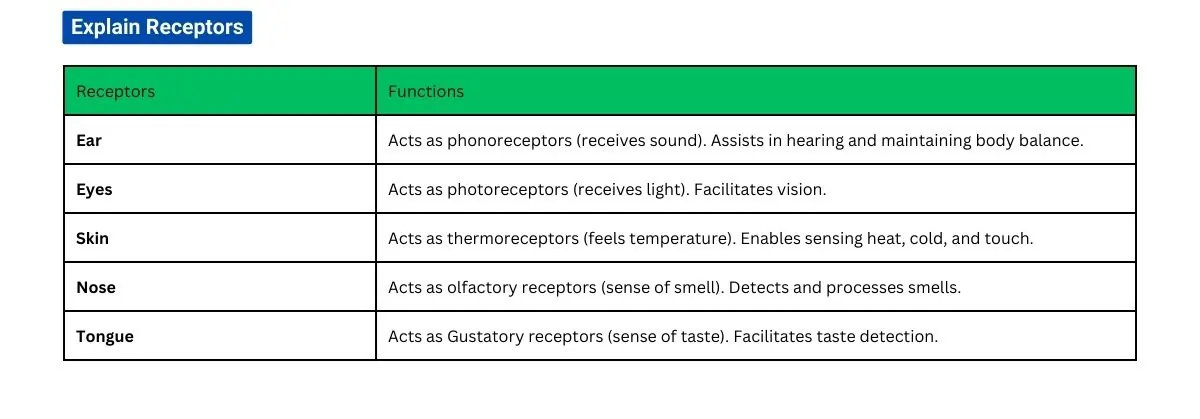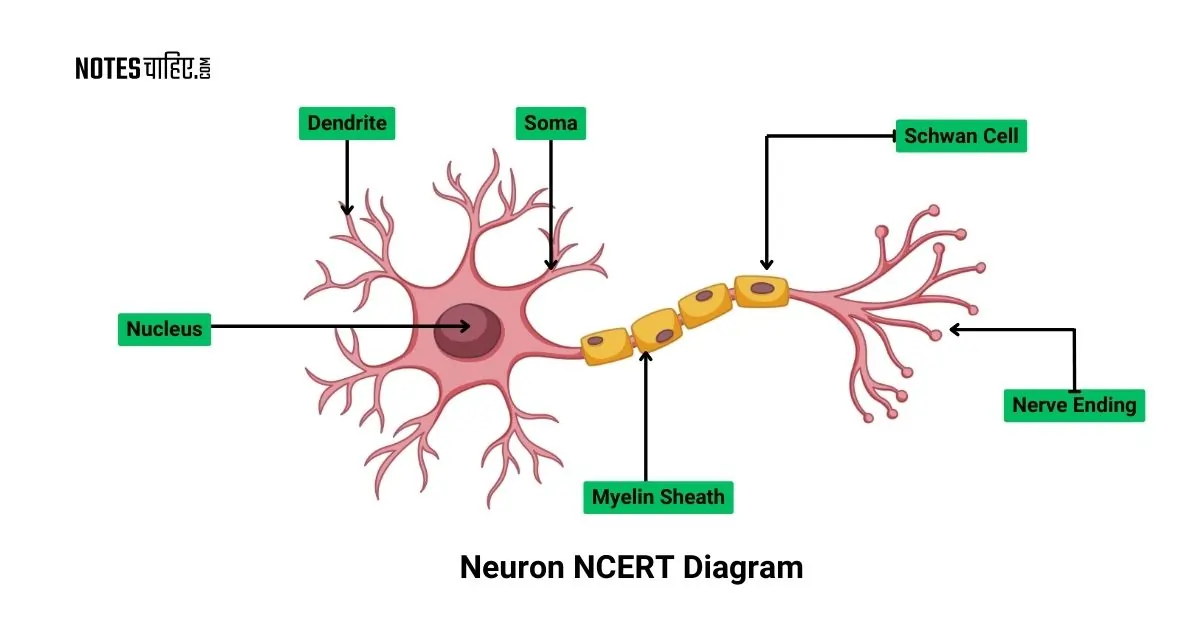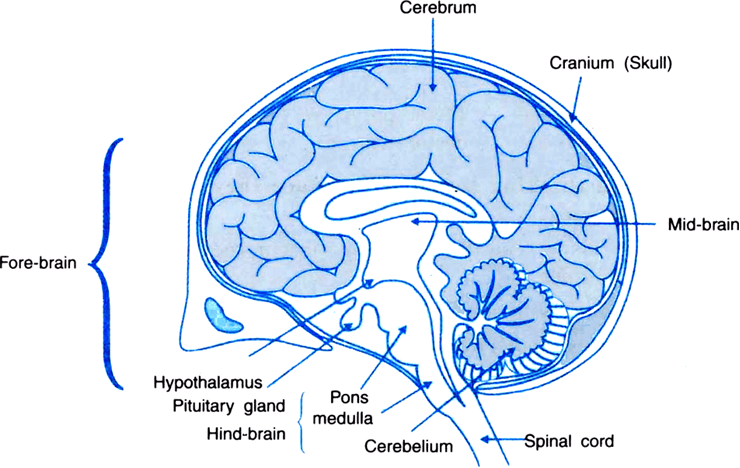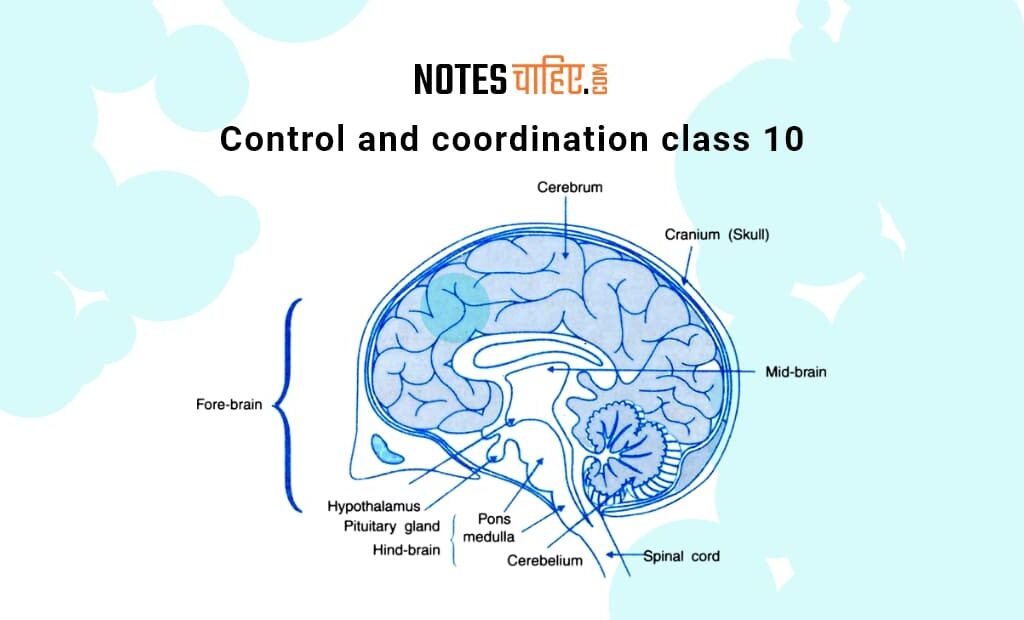The human body, a complex machine, sustains life through intricate functions. Class 10 Chapter 7, Control and Coordination, delves into how the body manages movements, coordinates actions with other body parts, and responds to the environment.
The exercises and in-text problems that are featured in the NCERT textbooks are simply explained in the NCERT Solutions for Class 10 Science of this chapter.
Students can depend on these NCERT Solutions, which have been meticulously put together by highly qualified professionals, for thorough comprehension. Referring to these solutions can help students prepare for exams by swiftly removing any remaining questions.
Students may now obtain the notes on control and coordination class 10 Chapter 6 NCERT Solutions by clicking on the link below.
Introduction to Control and Coordination
Organisms respond to stimuli such as light, heat, and nutrients by moving. In animals, the nervous and endocrine systems control and coordinate activities.
The nervous system uses electrical impulses, while the endocrine system relies on hormones, chemical messengers produced by endocrine glands, to assist in various functions.
In plants, hormones also play a role in coordinating movements.
Control and coordination are essential processes that allow organisms to interact with their environment and maintain internal balance.
In animals, the nervous system and the endocrine system work together to achieve control and coordination.
In plants, coordination is achieved through chemical substances called hormones. Let’s explore the notes on control and coordination class 10.
Control and Coordination In Animal
Control and coordination in animals involve the nervous and endocrine systems. The nervous system, consisting of the central and peripheral systems, manages rapid responses to stimuli through neurons and synapses.
The endocrine system, using hormones produced by glands, regulates slower but prolonged physiological processes.
Together, these systems maintain homeostasis, coordinate movements, and respond to external cues, ensuring an organism’s adaptability and survival.
Explain Receptors Class 10
Receptors are specialized tips of some nerve cells that detect the information from the environment. These are located in our sense organs.
| Receptors | Functions |
|---|---|
| Ear | Acts as phonoreceptors (receives sound). Assists in hearing and maintaining body balance. |
| Eyes | Acts as photoreceptors (receives light). Facilitates vision. |
| Skin | Acts as thermoreceptors (feels temperature). Enables sensing heat, cold, and touch. |
| Nose | Acts as olfactory receptors (sense of smell). Detects and processes smells. |
| Tongue | Acts as Gustatory receptors (sense of taste). Facilitates taste detection. |

Neuron Short Note with Diagram

Functioning of Neuron Simplified:
- Reception:
- Info received at dendritic tip.
- Chemical reaction creates electrical impulse.
- Transmission:
- Impulse travels from dendrite to cell body, then along the axon.
- Communication:
- Chemicals released at axon’s end.
- Cross synapse to start electrical impulse in next neuron’s dendrite.
- Delivery:
- Synapse enables delivery of impulses to other cells (muscles or glands).
Explain Reflex Action and Reflex Arc
Reflex Action:
Reflexive movement is a particular instance of involuntary organ movement. When a voluntary organ is nearby, it promptly pushes itself away from sudden danger to protect itself.
For instance, you jerk your hand away from an electric iron that is extremely hot. All of this happens quickly, sparing your hand from suffering impending harm. An illustration of a reflex action is this.
Class 10 Reflex Arc With Diagram
Reflex arc refers to the path taken by nerve signals involved in a reflex action.
The organ that enters the danger zone is the receptor.
The sense neurons pick up signals from the receptor and transmit them to the relay neuron. The spinal cord contains relay neurons.
The motor neuron carries impulses from the spinal cord to the effector. The effector engages, relocating the receptor away from the threat.

Sense Organs and Sensory Reception
Types of Sense Organs:
Sense organs allow organisms to receive and process information from the environment.
Humans have five main types of sense organs:
- Eyes (vision)
- Ears (hearing)
- Nose (smell)
- Tongue (taste), and
- Skin (touch and temperature).
Mechanism of Sensory Reception:
Sensory reception involves the conversion of stimuli into electrical signals that can be interpreted by the nervous system.
Different sense organs have specialized cells, such as photoreceptor cells in the eyes and mechanoreceptor cells in the ears, which convert specific stimuli into electrical impulses.
Human Brain Class 10 Notes with Diagram
The diagram of brain class 10, a highly complex organ, primarily consists of nervous tissue. To fit a large area in a small space, the tissues tightly fold.
A three-layered system of membranes known as the meninges surrounds and protects the brain. Protection is another. The forebrain, midbrain, and hindbrain are the three divisions of the human brain.
Parts Of The Human Brain
- Fore Brain: The cerebrum composes it.
- Mid Brain: The hypothalamus composes it.
- Hind Brain: The cerebellum, pons, and medulla oblongata compose it

Cerebrum
The cerebrum is the largest part of the human brain and is responsible for higher cognitive functions. It divides into four lobes: the frontal lobe, parietal lobe, temporal lobe, and occipital lobe.
- Functions of cerebrum
- The cerebrum controls voluntary motor actions.
- The site of sensory perceptions, such as tactile and auditory perceptions.
- It is the seat of learning and memory.
Hypothalamus
The base of the cerebrum houses the hypothalamus. The hypothalamus actively controls the sleep and wake cycle (circadian rhythm) of the body. Additionally, it regulates eating and drinking.
Cerebellum
The cerebellum, located at the back of the brain, is responsible for coordinating voluntary movements, maintaining balance, and controlling posture. It helps in the smooth execution of motor skills and ensures accurate and precise movements.
Midbrain
The midbrain controls visual and auditory reflexes and regulates the sleep-wake cycle.
Example: Blood pressure, salivation
Pons
The pons acts as a bridge connecting the cerebrum and cerebellum. It plays a role in controlling breathing, facial expressions, and some eye movements.
Spinal Cord
The spinal cord controls the reflex actions and messages between different parts of the body and brain.
Class 10 Science Notes For Board
Chapter of class 10 science basically includes some important Chapter topics from the NCERT Book, Such as acids bases and salts, metals and non-metals, chemical reactions and equations, Carbon and its Compounds, Life Processes, Control, and Coordination, etc.
Chapter-wise notes on these subjects are available in the table below, click on the links to access them.
- Chapter 1 Chemical Reactions and Equations Class 10 Notes
- Chapter 2 Acids Bases and Salts Class 10 Notes
- Chapter 3 Metals and Non-metals Class 10 Notes
- Chapter 4 Carbon and its Compounds Class 10 Notes
- Chapter 5 Periodic Classification of Elements Class 10 Notes
- Chapter 6 Control and Coordination Class 10 Notes
- Chapter 7 How do Organisms Reproduce Class 10 Notes
- Chapter 8 Heredity and Evolution Class 10 Notes
- Chapter 9 Light Reflection and Refraction Class 10 Notes
- Chapter 10 Human Eye and Colourful World Class 10 Notes
- Chapter 11 Electricity Class 10 Notes
- Chapter 12 Magnetic Effects of Electric Current 10 Notes
- Chapter 13 Our Environment Class 10 Notes
FAQ’s Control and Coordination Class 10
The nervous system transmits signals through specialized cells called neurons, which communicate through electrochemical impulses.
Plant hormones regulate various aspects of growth and development, including cell elongation, flowering, and fruit ripening.
In some cases, certain actions can become involuntary through repetitive practice and the formation of automatic responses.
Currently, there is no cure for Parkinson’s disease, but medications and therapies can help manage its symptoms.

